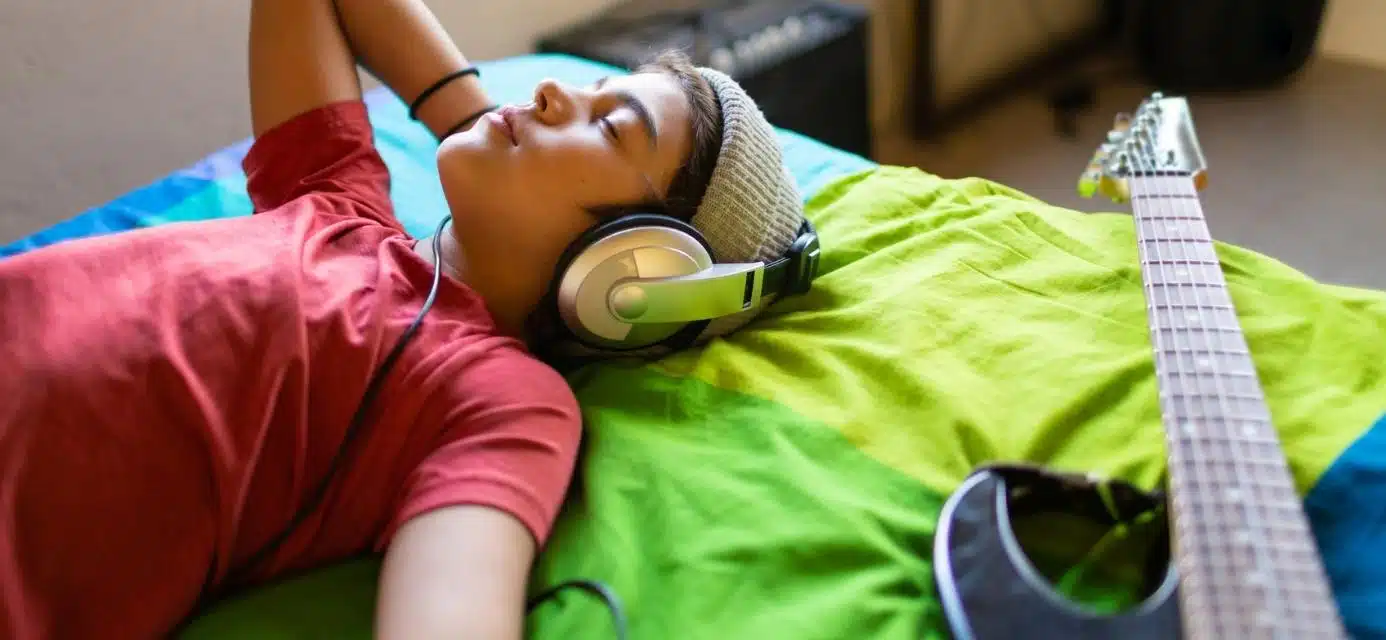Uncontrolled anger comes with a rush of energy that feels unstoppable. Doors slam, fists fly, insults wound. Giving in to the sudden surge of adrenaline that accompanies anger may feel irresistible in the moment, but an angry explosion usually makes a problem worse, not better. Anger management techniques for teens can help them learn to express their anger in a way that serves them rather than hurting them.
Anger is not necessarily a problem in itself. Rather, it can be a valuable source of information that helps us understand who we are, what we like and need, and what’s missing in our lives. However, because anger is uncomfortable to feel and uncomfortable to be around, it is commonly misunderstood and mishandled—and not just by teens. Many adults have learned to suppress or avoid anger (their own or other people’s) without responding constructively to it. As a result, parents don’t always know how to teach healthy anger management skills for teens.
Why Teens Need Anger Management Techniques
Teen anger issues arise for a variety of developmental reasons. For one, the physical, mental, and social changes that come with adolescence are challenging. Teens have newly pressing emotional needs—to feel accepted and competent, for example. At the same time, they feel a growing urge for independence, which often leads to greater tension with parents. Common triggers for teen anger include feeling disrespected, inadequate, or misunderstood by parents.
But not all anger is a natural part of growing up. Anger can often be a secondary emotion that masks other painful emotions, such as grief, shame, or guilt. When teens are being bullied or excluded by a friend group, for example, they may be too ashamed to share what they’re going through. If they’ve suffered trauma or grief, they may not be ready to deal with the sadness and pain of facing it directly. So the feelings come out as anger instead. Anger can also indicate underlying substance abuse, loneliness, depression, or suicidal behavior. There are many different types of anger, chronic anger, judgemental anger, passive-aggressive anger, and volatile anger, among others.
Because anger can mask distress or a mental health issue, it’s essential for parents, therapists, or other mentors to help teens get at the root of their anger.
“Anger is a reaction to emotions and thoughts within ourselves.”
Bernard Golden, author of Healthy Anger
3 Ways Teens Deal with Anger
Teens (and people in general) typically have three ways of expressing anger: outward aggression, inward aggression, or passive aggression. When we think of problematic teen anger, it’s usually as an eruption of outward aggression. This is the kind of anger that parents find bewildering and difficult to handle. With peers, it can manifest as physical violence; with teachers and coaches, it can look like belligerence and resisting direction. This form of anger is more common among teen boys.
Teen anger can also be directed inward, or “stuffed.” Stuffing anger can increase guilt, shame, and self-criticism. This, in turn, can lead to behaviors such as disordered eating and self-harm. More typical of teen girls, inward-directed anger can result in smiling depression, a form of depression in which teens appear to be doing well, and even excelling socially and academically, while suffering inside.
Or teens can express anger through passive aggression, also more typical of girls. This might look like making snide comments to parents or exhibiting mean girl behaviors within their friend group.
The Anger Cycle in Slow Motion
Whatever the root cause of teen anger or their way of expressing it, anger management techniques for teens begin with an awareness of the anger cycle. Although anger seems to happen in a sudden “whoosh” from trigger to reaction, it actually has discrete stages. Recognizing and decoding the anger cycle through anger management techniques for teens is key for all three types of unhealthy anger habits.
Anger is associated with the “fight or flight” response. This near-instantaneous sequence of hormonal and physiological effects prepares the body to react quickly to threatening situations. The heart starts pounding, the muscles tense up, the senses sharpen, and the breath quickens. And the reflective, rational part of our brain (the prefrontal cortex) disengages in favor of the emotional, survival-oriented amygdala. This is particularly noticeable in teenage brains, which have yet to fully develop.
Stages of Anger
It can be difficult to identify the stages of anger as they occur because they happen so quickly. But any angry eruption (or the avoidance of anger via shutdown) can be broken down into the following components:
- Triggering event, an event or situation that prompts a series of…
- Negative thoughts, beliefs, or interpretations about the event, often irrational, that produce a rush of…
- Negative emotions linked with those beliefs or interpretations, whether or not they are true, which are reflected in…
- Physical symptoms of those emotions, such as racing heartbeat, clenched fists, or flushed cheeks, which can lead to…
- Behavioral reactions, such as fighting, criticizing, or shutting down, based on the sequence of thoughts, feelings, and physical sensations rather than the event itself. An aggressive behavioral reaction can become a…
- Triggering event for someone else, continuing the cycle.
The goal of anger management techniques for teens is to slow the process down so they can choose how to respond to a triggering event, rather than reacting automatically. Recognizing the stages of the anger cycle allows a teen to understand how their anger may be related their past experiences or current unmet needs.
With practice, teens can learn to reflect on episodes of anger from a calmer perspective. Hence, they can learn to pause before the behavior stage and choose a way to respond that will serve them better. Anger management skills for teens support them to examine their thoughts, feelings, and sensations. The goal is to gain greater insight into the significance of their anger. Ultimately, this self-understanding will help them more effectively address the true cause of the emotion.
How Can Teens Control Their Anger? 5 Anger Management Tips & Techniques
The way a teen deals with anger depends on a variety of factors, including biology, temperament, and life experiences. These factors influence how quickly someone responds to anger, what situations trigger that anger, and how well someone tolerates anger in themselves and others. Over time, these patterned responses become habits. However, these habits can be reshaped through awareness and practice.
Parents, mentors, and therapists can support young people by helping them practice the following anger management techniques for teens:
Self-Soothing
The first task of anger management is to learn how to soothe oneself. The insight that can be gained from anger is literally not available when someone is swept up in an eruption of anger. The fight-or-flight response disengages the rational thinking of the prefrontal cortex. Various relaxation techniques counteract the whoosh of fight-or-flight energy:
- A playlist of a teen’s favorite music—one of the most accessible approaches, which is likely already close at hand
- Observing the breath: Inhaling to a count of four and exhaling to a count of six immediately calms the nervous system, no practice needed.
- A progressive relaxation series: Lie down with eyes closed, and tense, then relax, the muscles throughout the body, starting at the feet and moving up to the head. This is also easy for beginners, especially when guided by an adult.
- A yoga or meditation class—this takes a bit more commitment, but the effects can be far-reaching.
- Guided visualizations also help soothe a teen’s nervous system.
- Practicing self-compassion—when a teen can offer kindness and compassion to themselves, anger is more easily defused
- Spending time with pets.

Does Your Teen Need Help?
We are here for you!
Have Questions?
Send us a message.
Continue Reading ▼

Self-Awareness
Once a teen has cooled down, they can begin the process of reflection, ideally with the help of an empathetic adult. The objective is to be able to identify the different stages of the anger cycle:
- What was the trigger for their anger?
- How did what happened differ from their expectations?
- What thoughts and beliefs did the situation bring up?
- What emotions were stirred up? (A list of feeling words may be helpful.)
- What physical sensations did they notice?
- How did they react to those thoughts, feelings, and sensations with their behavior?
Once teens are able to step back and witness the process, they can make more conscious choices about how they express their anger. Awareness puts the brakes on physiological dysregulation. Keeping an anger log is one way a teen can start to notice common triggers and patterns of reaction. Eventually, they may be able to anticipate challenging situations and take steps to avoid their habitual response.
Rethinking the Situation
Once a teen has learned to recognize the stages of the anger cycle, they are ready to imagine alternative possibilities at each stage. This process might include:
- Imagining the triggering event from another person’s perspective
- Challenging the accuracy of their own thoughts and beliefs
- Thinking of alternate ways to discharge the energy of their anger (going for a run, for example, or slugging punching bags at the gym)
- Visualizing how the anger cycle could unfold differently if their thoughts about it were different
- Rehearsing different scenarios for ways to resolve the situation in a way that honors the needs and desires of everyone involved, including their own.
Healthy Self-Expression
When thoughtfully investigated, anger helps us understand who we are, what we like and need, and what’s missing in our lives. Anger as a subject of creative expression can even bring people together, instead of causing conflict. Self-expression is a powerful anger management technique for teens. Forms of healthy expression include:
- Journaling
- Poetry
- Songwriting
- Visual art
- Talking with a trusted friend or family member.

Building Resilience
It’s far easier to stay emotionally balanced when basic physical and social needs are satisfied. Self-care builds resilience for navigating the anger cycle. These approaches aren’t specifically about how teens can control their anger, but they create a stable foundation for more effectively managing emotions.
- Getting enough sleep (teens need 8-10 hours a night)
- Good nutrition, proven to impact mental health
- Physical activity to let off steam and improve well-being
- Positive connections: making time for friendships, relationships with mentors, and volunteering.
When Anger Management Techniques for Teens Aren’t Enough
Teaching a teen how to control their anger is important. But it’s just one part of a bigger process that also involves helpings teens access the reasons for their anger and heal underlying causes and offer ways to help with anger problems. In order to take those next steps, families may need the support of a mental health professional or a treatment program.
At Newport Academy, we help young people and families rebuild harmony after teen anger has pushed them apart. In addition, we support adolescents to uncover and address trauma, grief, lack of self-esteem, and other issues that may be catalyzing their anger. Contact us today to find out about our tailored treatment plans for adolescents, and our residential and outpatient locations nationwide.
Key Takeaways
- Anger can be a valuable source of information that helps us understand who we are, what we like and need, and what’s missing in our lives.
- Teen anger is often a secondary emotion that masks other painful emotions, such as shame or guilt. If not addressed, these emotions can develop into anxiety, depression, or suicidal behavior.
- Any uncontrolled anger (or the avoidance of anger via shutdown) can be broken down into a sequence of stages known as the anger cycle.
- Teens typically express anger in one of three ways: outwardly in aggressive eruptions, directed inward at themselves, or through passive-aggressive behaviors.
- The goal of anger management techniques for teens is to help them interrupt the anger cycle and learn to express their anger in a way that serves them, instead of hurting them.
Frequently Asked Questions About Teen Anger Management Techniques
When a teen explodes at any little thing, or gets extremely angry for no obvious reason, it may be a symptom of an underlying mental health disorder. Research shows that higher levels and frequency of teen anger are linked with teen mental health conditions like depression and anxiety.
Parents can help teens practice relaxation and visualization exercise to head off anger and tantrums. In some cases, support from a therapist or anger management counselor may be necessary, so they can gain skills for staying calm and better understand why they are so angry.
Cognitive Behavioral Therapy (CBT) is considered one of the most effective strategies for teen anger management. CBT helps teens identify their triggers, practice coping skills, and shift their thoughts and behavior around the things that make them angry.
Sources
Complement Ther Med. 2021 Sep; 61: 102772.
J Youth Adolescence. 2020; 49: 119–135.
Curr Opin Psychol. 2018 Feb; 19: 65–74.
J Adolesc. 2015 Jul; 42: 148–58.






